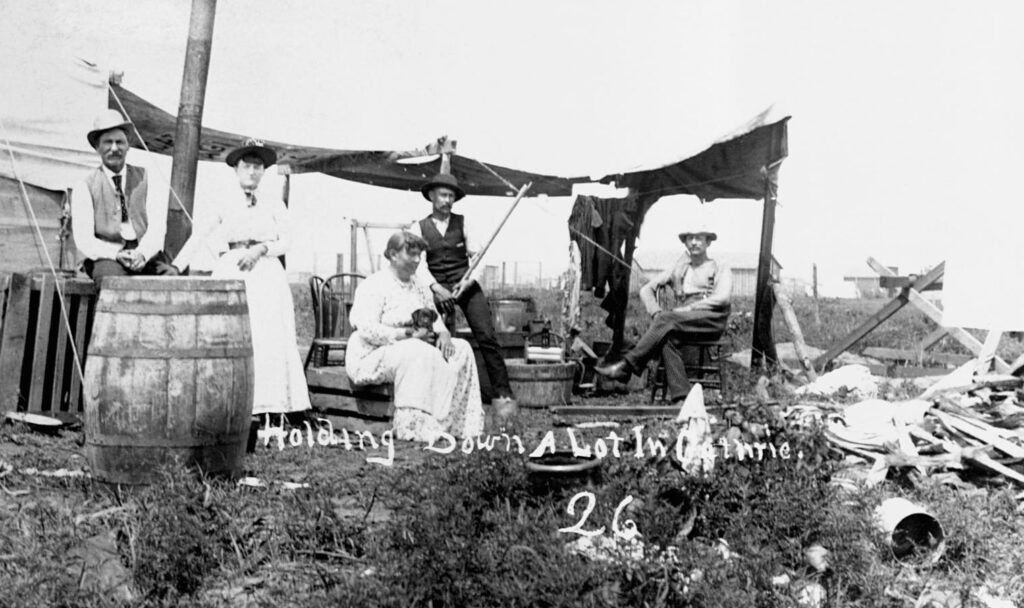Just because land is vacant doesn’t mean it makes economic sense to build on it. The idea of turning … More
Did you hear that sound? It was my eyes rolling about Homesteading 2.0, a Trump administration initiative to sell off or somehow turn 800 square miles of federally owned land into housing. The homesteading reference is to Homesteading Act of 1862, signed into law by Abraham Lincoln. Why am I skeptical? Well, I’m skeptical of almost any “solution” to housing that promises big results. I’ve been at this long enough to know that almost every solution is weighted down with ideology, lack of consideration of the interplay of regulation and economics, or both. I’ll go back to my necessary and sufficient test. Is land necessary for more housing? Yes. Is it sufficient? Of course not. Let’s take a high level look at the idea of federally owned land for housing.
Details of the proposal sound Brobdingnagian; according to the American Enterprise Institute (AEI), by selling off Bureau of Land Management land, “the West could build 3 million new homes, closing the housing supply gap and restoring housing affordability and economic vitality for generations to come.” This is where we run into what I call the “scale problem.” What does 850 square miles look like. Let’s go all Harper’s Index here for a bit.
Let’s start with the smallest state in the country, Rhode Island. It is 1,214 square miles. Wow. That’s huge, isn’t it? But it takes 45 minutes to drive across the state. Let’s think of it another way. Many single-family lots are about 5,000 square feet. There are 23,696,640,000 square feet in 850 thousand square miles and that 4,739,328 lots measuring roughly 5,000 square feet.
There are, according to the Saint Louis Federal bank, about 90,837 local governments in the United States. If we guess that the 850 square miles are in the western half of the country, and we just divide that number in half, we’re talking about 45,000 building and land use codes that would apply in those 850 thousand square miles.
According to the National Association of Homebuilders, it takes about 10 months to build a single-family home. According to the Association, “homes ranging from 1,200 to 3,999 sq. ft. are built at the average building time, typically around 10 months. As the size increases beyond 4,000 sq. ft., there is a noticeable upward trend in completion times. Homes with 4,000-4,999 sq. ft. take about 12 months, while those between 5,000- 5,999 sq. ft. extend to a little more than 14 months. Homes over 6,000 sq. ft. take the longest to build, requiring almost 18 months from permit to finish.”
How about cost? According to the internet, the cost of a single-family home “ranges between $100 and $200 per square foot, with the median price at around $150. Let’s go with that. So, if we just opened up right now, gave away all that land, in about a year or so, if everything went right, it would cost us about $14,217,984,000 to build 4,739,328 single-family homes of about 3,000 square feet.
We know that the United States is allocating about $13 billion for Low Income Housing Tax Credits (LIHTC) already, every year. So, if we were to repurpose all that for the one-time building spree, yes, maybe it would all work out.
But forget about all those numbers, consider the somewhat breathless article in the Las Vegas Review Journal in support of the effort.
“In more concrete terms, preliminary estimates by the American Enterprise Institute for the Las Vegas metro area indicate developable BLM land within two miles of any city limits totals 180,000 acres and that 1.4 million homes could be built at eight homes per acre. This constitutes about 9 percent of all the land the BLM manages in the metro area. This would help ensure the future economic vitality of the Las Vegas metro area, which currently has a population of 2.33 million, having grown by about 1 million since 2000.”
According to the City of Las Vegas, there are 131,837 owner occupied units in the city of Las Vegas. And if my math is right, (thanks Excel), 180,000 acres is about 7,840,800,000 square feet or about 1,568,160 lots measuring about 5,000 square feet. The Review article is clearly using Metropolitan Statical Area (MSA) data which is fine, but what would adding 1.5 million people to the area do to Las Vegas? I sound like a NIMBY here, but what about roads, schools, water, sewers, and necessary retail commercial development not to mention jobs; where will all these people work? And how will they manage to qualify for the mortgages they will need to pay for this housing?
Is Homestead 2.0 a housing moon shot? Am I just a nattering nabob of negativism? Or is this just another waste of time? Who knows? Sure, we should certainly look at freeing up government owned land at all levels for use for housing. But the myriad of local governments alone that would be permitting all these units, the cost of them, and the lack of market assessment – do 1.5 million people want to move to Homestead 2.0 homes in Las Vegas even if they are free? – are enough to give one pause. If AEI and the Bureau of Land Management have time to work on this idea, I support them; but I’m not going to allocate very much square footage in my brain to the idea until I see more progress.
Read the full article here
